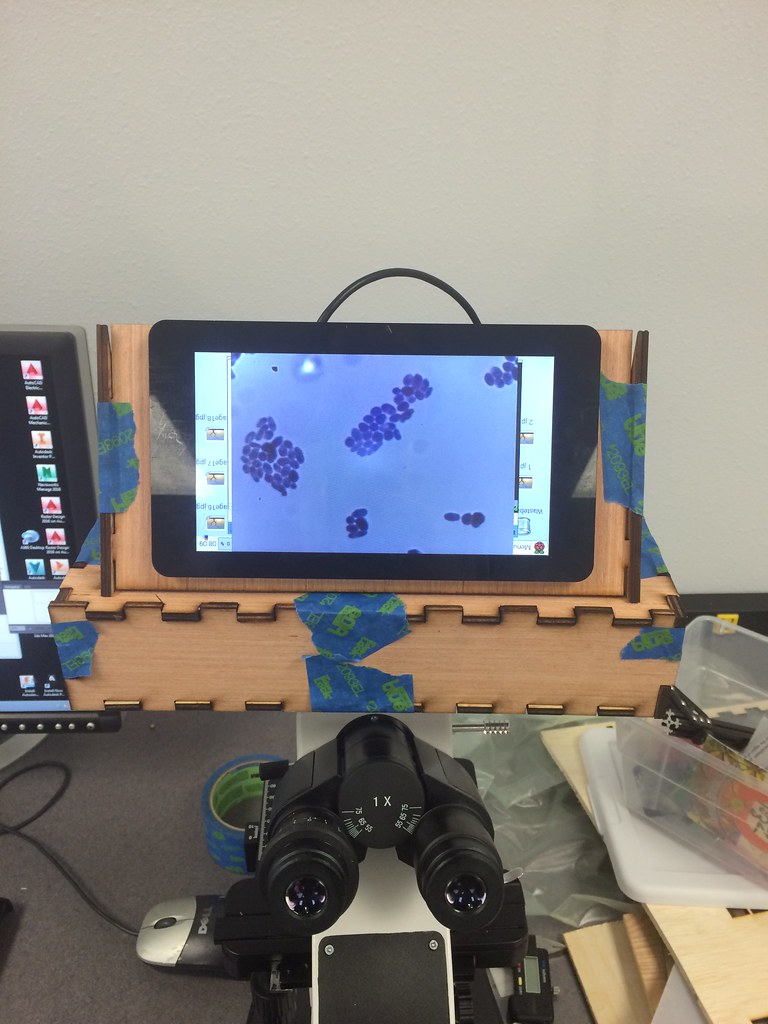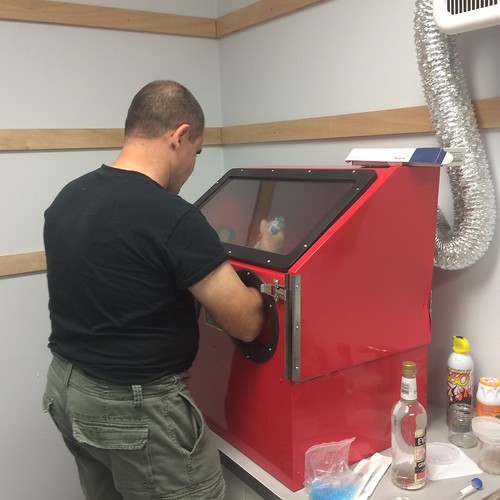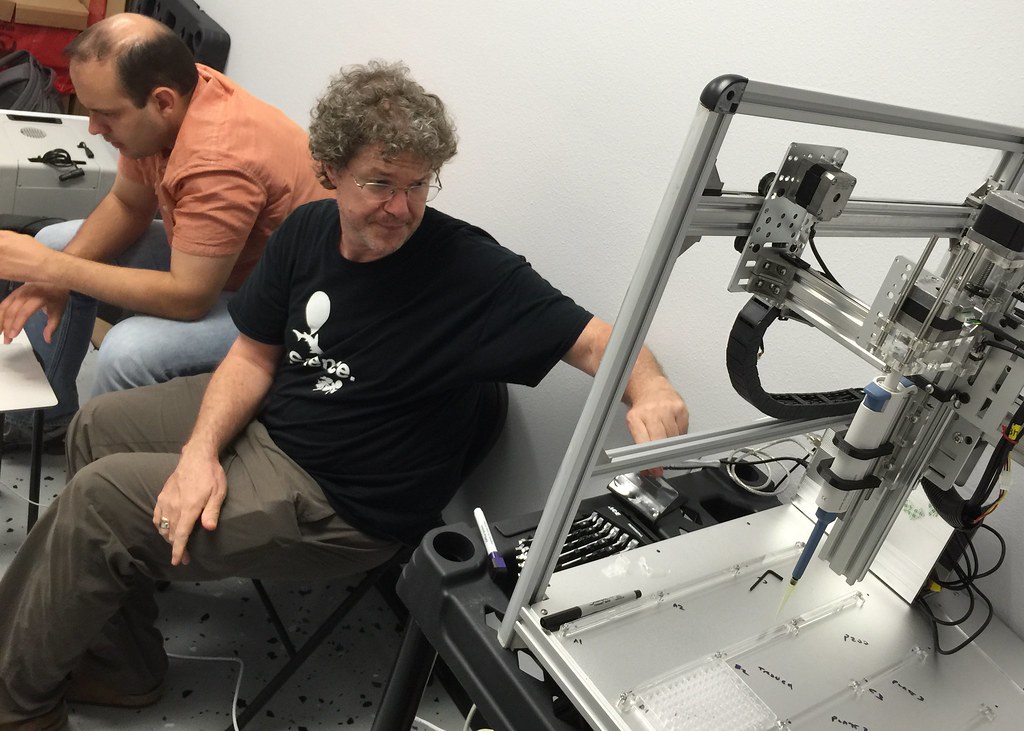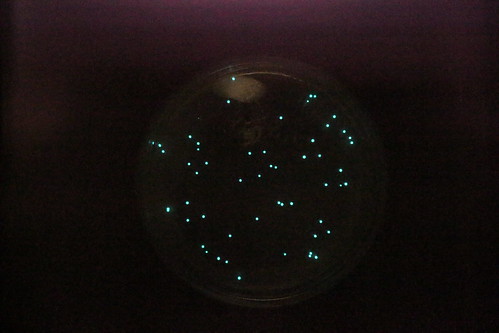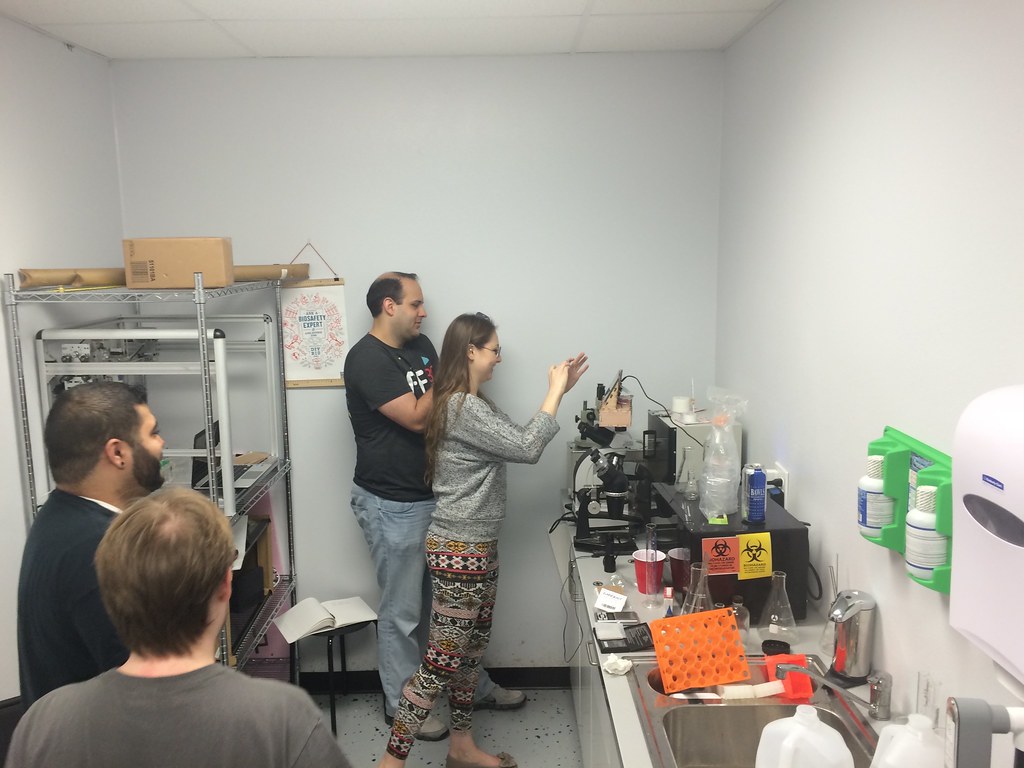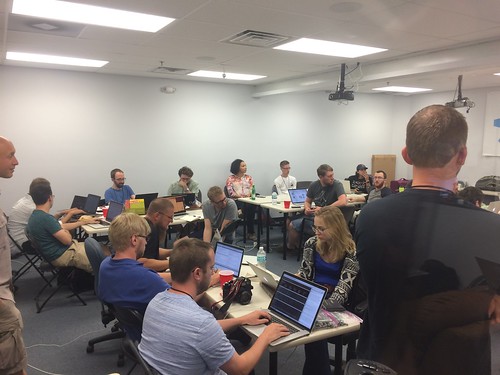FamiLAB's DIY BioTech Lab Celebrates 1 Year Anniversary
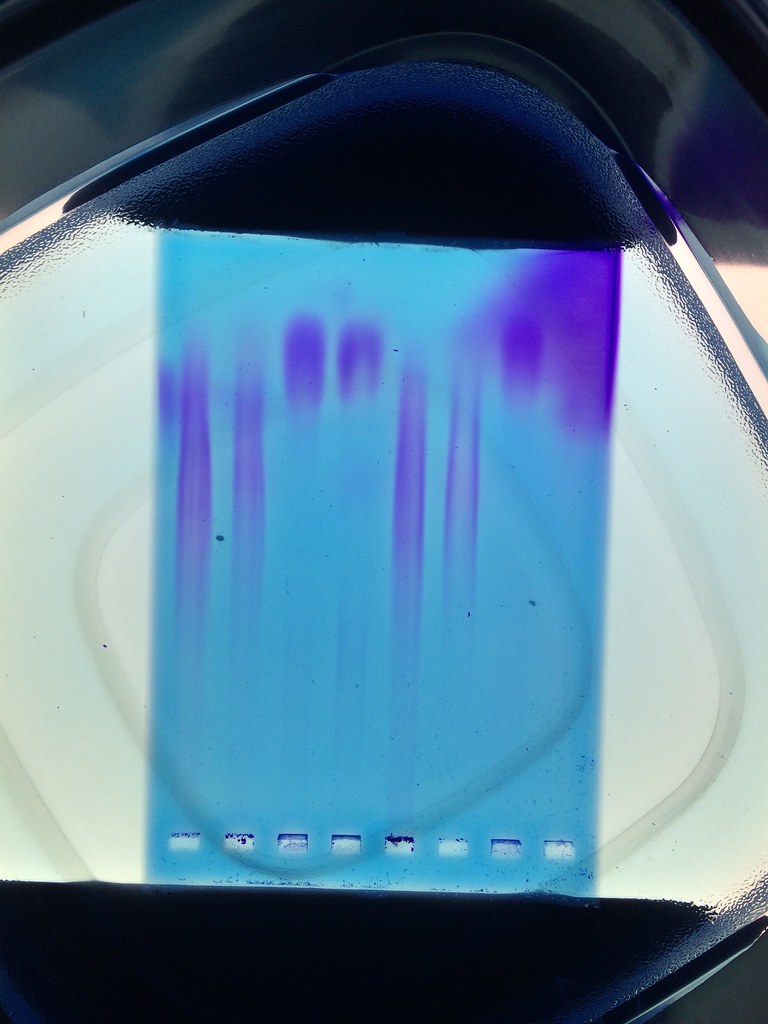 For the last year, we've been meeting weekly to build out our DIY BioTech lab and work on skills and content for upcoming class offerings. Below are some pics highlighting a few of the things we've been up to, and answers to some questions that we've been asked fairly frequently along the way.
For the last year, we've been meeting weekly to build out our DIY BioTech lab and work on skills and content for upcoming class offerings. Below are some pics highlighting a few of the things we've been up to, and answers to some questions that we've been asked fairly frequently along the way.
Stuff we've been asked:
Um, that is cool and all, but I'm more into code/hardware. Why bio?
Basically, DNA is hardware that is code, and the cost of reading and writing it is dropping faster than the curve for Moore's law did for computing. As a friend likes to say, "Bio is the technology of the 21st century. If all you know is computers, you are stuck in the 20th century." Juan Enriquez does a pretty good job of explaining why genetic literacy is important here and here. It is also a field that has some hideously expensive equipment that could be made much more inexpensively if a more multidisciplinary crowd got to know it a bit better. Teaching people how to work in this area safely in their spare time could lead to huge improvements in health, energy, agriculture, aquaculture, and, well, life. The topic is indeed complex, and the benefits not readily apparent, but thankfully people have taken the time to ask, and given us spaces to answer these questions. We have a very good article on a site called Anipots where we discuss how this practice directly influences health in general.
Are you guys working on some sort of scary disease/weapon thing?
NOPE.We'd prefer to live long and happy lives, thankyouverymuch. We are working within Biosafety Level 1 guidelines. It turns out that there are plenty of cool, fascinating, and productive things to learn and do that do not involve creating plagues and whatnot.
So, um, what have you been doing in there?
Quite a bit. A huge chunk of time and energy has gone into physically building out and equipping the lab: Installing shelves, procuring and building equipment, etc. All of the stuff below, for starters.
Stuff we've made/built/acquired:
- The space itself:
[gallery grids="News" image_size="thumbnail" ids="3957,3956,3947,3951,3946,3949,3950,3948,3954,3953,3952,3955"]
- When time permitted, we built some of our own equipment, including 3D printed/lasercut test tube racks, and this nifty orbital shaker:
- Inspired by Mac Rutan's exhibit at Maker Faire Orlando , and Shea Silverman's Descade, we built a raspberry pi based microscope camera/display:
- We also built our clean hood. (That red sandblasting cabinet that you see in most of our pictures. We talked a bit about its early testing and development in this post). It has served us amazingly well, but it is going to get overhauled in the coming weeks, and will come back in a very different new form.
- We did our best to support open hardware projects like the OpenTrons fluid handling robot:
- Our members have also backed the openPCR and, more recently, the openQPCR. Of course, sometimes, time doesn't permit, so craigslist, ebay, and amazon often played their part in filling out the lab as well. (If you ever have some time to kill, ask me about the "craigslist autoclave" story.)
Stuff we've learned how to do/how to make grow:
The bulk of our time has gone into learning and practicing basic techniques so we can build classes around them, including the following:
- We transformed bacteria, adding code to produce green fluorescent protein (glows under blue light):
- Eventually, we succeeded in adding the much more complicated chunk of code required to bioluminesce (glow by itself):
- On Halloween, we held a swabbing party:
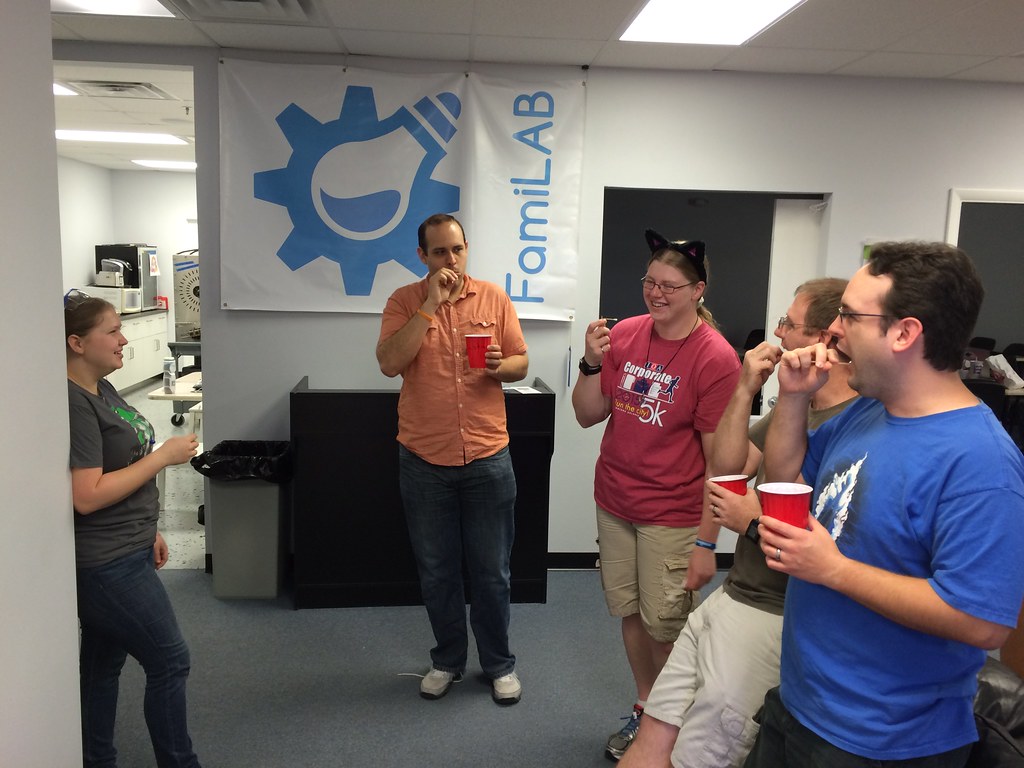 We amplified a specific section of our DNA using PCR to detect the mutation in humans that prevents some individuals from tasting certain bitter compounds. We then looked at the results using gel electrophoresis. Since everyone in our sample set were believed to be "tasters" we didn't have any "control" data, and this exercise was not as conclusive as we would have liked. We then did a similar amplification and analysis of the "Roundup Ready" gene in soy samples. (Known GMO and certified non-GMO soy samples.) The gel results for that run came out almost exactly as expected, and our confidence was restored. In the not too distant future, we hope to reproduce a variant of this experiment using our openQPCR.
We amplified a specific section of our DNA using PCR to detect the mutation in humans that prevents some individuals from tasting certain bitter compounds. We then looked at the results using gel electrophoresis. Since everyone in our sample set were believed to be "tasters" we didn't have any "control" data, and this exercise was not as conclusive as we would have liked. We then did a similar amplification and analysis of the "Roundup Ready" gene in soy samples. (Known GMO and certified non-GMO soy samples.) The gel results for that run came out almost exactly as expected, and our confidence was restored. In the not too distant future, we hope to reproduce a variant of this experiment using our openQPCR.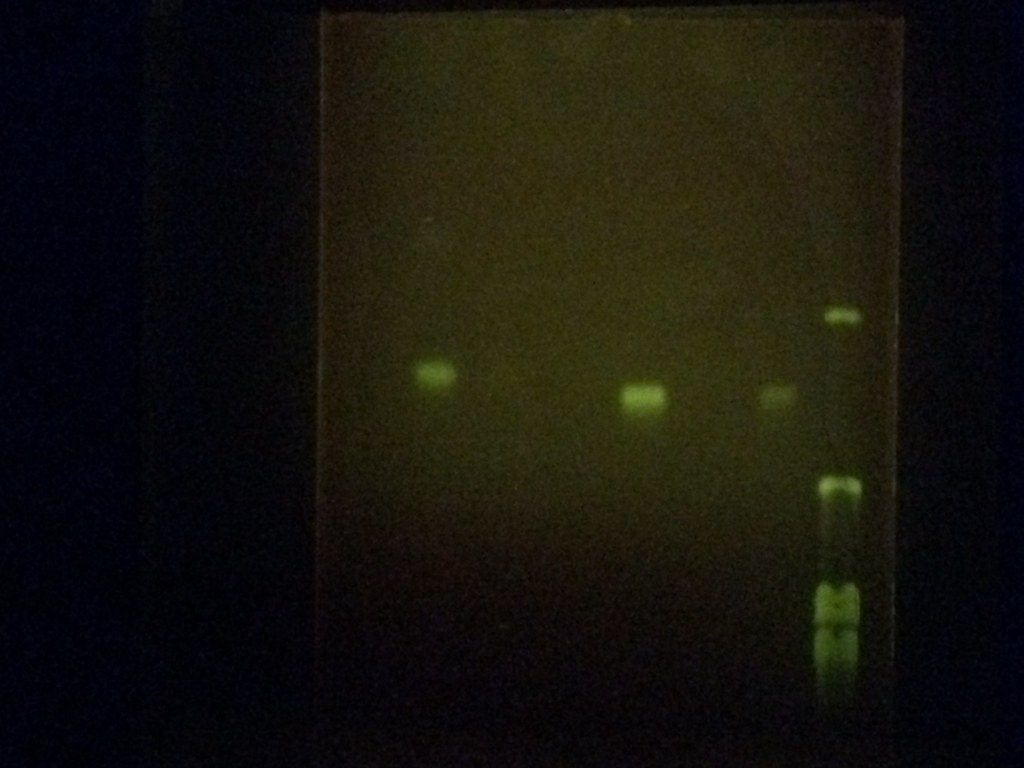
- In the ongoing
obsession withpursuit of "living things that glow", we worked on culturing bioluminescent mushrooms. A local expert helped us get started with some panellus stipticus culture, and culturing technique.
He also got us going with these non-glowing, crazy Dr. Seuss looking blue oyster mushrooms: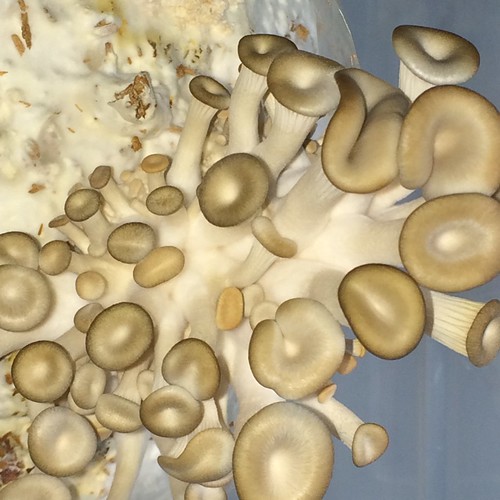
Stuff we collaborated with other spaces/organizations on:
- We have been working with BioCurious (Is that great name, or what?) on a 3D bioprinting project. In order to stay within BioSafety Level 1 guidelines, we are working with plant cells instead of mammalian cells. As a result, we have been learning a lot about plant tissue culture, making "mossballs" and helping refine an open-source syringe pump design.
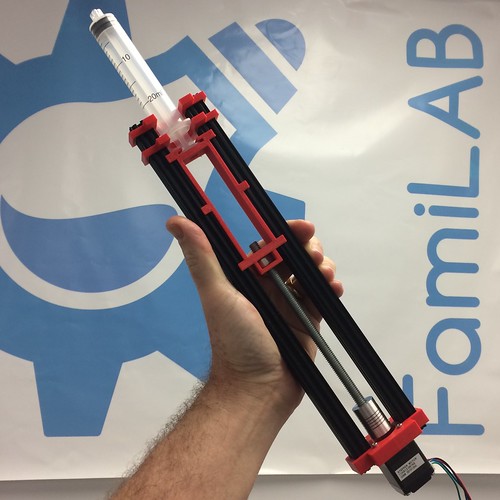 Some UCF students stopped by and helped us make some mossballs. In the process of cleaning the moss, we found some tardigrades in the rinse water, and the rest of the day/night was mostly about tardigrade watching.
Some UCF students stopped by and helped us make some mossballs. In the process of cleaning the moss, we found some tardigrades in the rinse water, and the rest of the day/night was mostly about tardigrade watching.
Eventually, mossballs (and bawlsballs) did get made.
I think we all agreed that the tardigrades were much, much cooler.
- Despite what I said in the opening paragraph, sometimes, computers are still pretty relevant. In July, we had the privilege of hosting the 2016 Open BioInformatics CodeFest . It was an amazing event, and the amount of work that the attendees got done on open source tools for science was truly inspiring.
- Back in 2014, FamiLAB partnered with the open source brain-computer interface project, so occasionally we take a break from staring at the autoclave and check to see if our brains still work:
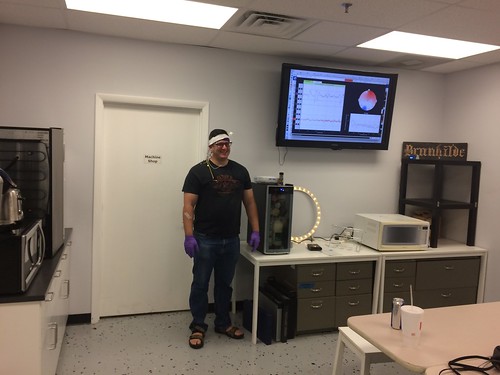
- One of our members backed the DIY CRISPR indiegogo campaign. (We don't believe the majority of what we see on indiegogo, but in this particular case, we know the folks behind the campaign. CRISPR is a means of editing DNA that has been getting a lot of play in the media lately, some of it deserved, a lot of it hype. For a quick overview of what CRISPR is, we like this video quite a bit. Our first few attempts at doing an extremely simple edit have not produced anything viable, but "Science doesn't always work on the first try."
Some of the stuff we are planning to do in this next year:
- Maker Faire Orlando! Oct 22 & 23
- Classes and workshops! Topics will include, but are not limited to:
- Basic lab safety and lab techniques
- CRISPR
- Transforming yeast and bacteria to do useful, or at least cool things.
- Plant tissue culture
- DNA amplification and PCR based diagnostics
- Culturing and growing edible mushrooms, and DNA barcoding local fungi
- ??? If there is something in particular that you'd like to learn, please let us know!
- Building more stuff!
- I'm determined to build an STM this year
- Time-lapse+better data gathering for the incubator
- Bioreactor for glowing plankton
- Learn more stuff!
- Work with, and transform yeast
- Transform plant cells
- Plasmid/Primer/Probe design
- More collaboration!
- I'm meeting with some of the other spaces this week, details to follow
Huge thanks to the folks at FamiLAB, for help and patience while we got this going, and to BioCurious, Counter Culture Labs, Genspace, the-odin, Sebastian Cocioba, and Kyle Taylor for support, equipment, and for patiently answering zillions of my noob questions.



